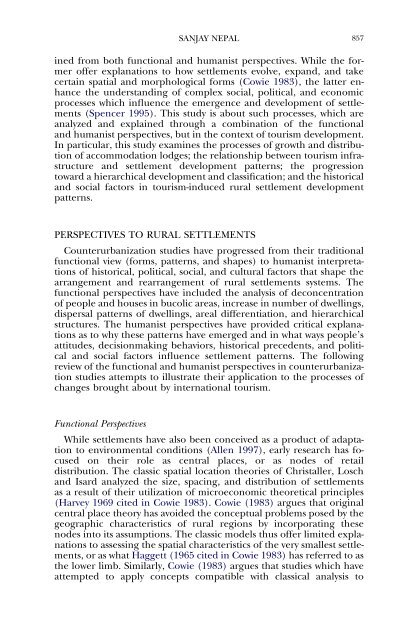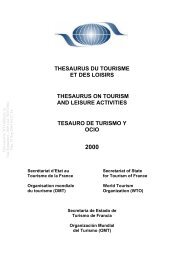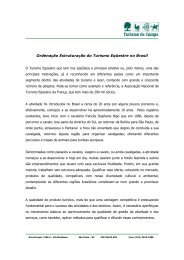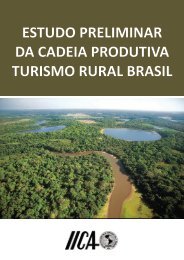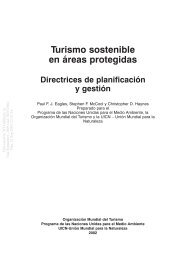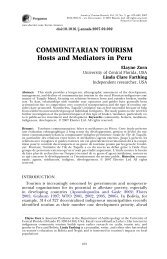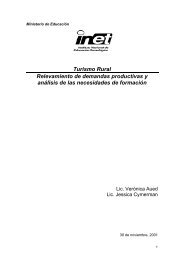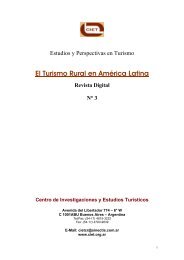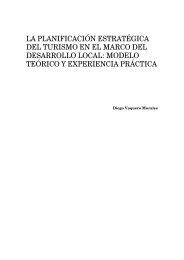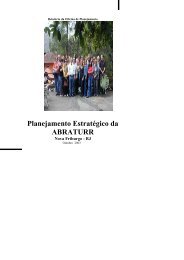TOURISM AND RURAL SETTLEMENTS Nepal's ... - ResearchGate
TOURISM AND RURAL SETTLEMENTS Nepal's ... - ResearchGate
TOURISM AND RURAL SETTLEMENTS Nepal's ... - ResearchGate
You also want an ePaper? Increase the reach of your titles
YUMPU automatically turns print PDFs into web optimized ePapers that Google loves.
SANJAY NEPAL 857<br />
ined from both functional and humanist perspectives. While the former<br />
offer explanations to how settlements evolve, expand, and take<br />
certain spatial and morphological forms (Cowie 1983), the latter enhance<br />
the understanding of complex social, political, and economic<br />
processes which influence the emergence and development of settlements<br />
(Spencer 1995). This study is about such processes, which are<br />
analyzed and explained through a combination of the functional<br />
and humanist perspectives, but in the context of tourism development.<br />
In particular, this study examines the processes of growth and distribution<br />
of accommodation lodges; the relationship between tourism infrastructure<br />
and settlement development patterns; the progression<br />
toward a hierarchical development and classification; and the historical<br />
and social factors in tourism-induced rural settlement development<br />
patterns.<br />
PERSPECTIVES TO <strong>RURAL</strong> <strong>SETTLEMENTS</strong><br />
Counterurbanization studies have progressed from their traditional<br />
functional view (forms, patterns, and shapes) to humanist interpretations<br />
of historical, political, social, and cultural factors that shape the<br />
arrangement and rearrangement of rural settlements systems. The<br />
functional perspectives have included the analysis of deconcentration<br />
of people and houses in bucolic areas, increase in number of dwellings,<br />
dispersal patterns of dwellings, areal differentiation, and hierarchical<br />
structures. The humanist perspectives have provided critical explanations<br />
as to why these patterns have emerged and in what ways people’s<br />
attitudes, decisionmaking behaviors, historical precedents, and political<br />
and social factors influence settlement patterns. The following<br />
review of the functional and humanist perspectives in counterurbanization<br />
studies attempts to illustrate their application to the processes of<br />
changes brought about by international tourism.<br />
Functional Perspectives<br />
While settlements have also been conceived as a product of adaptation<br />
to environmental conditions (Allen 1997), early research has focused<br />
on their role as central places, or as nodes of retail<br />
distribution. The classic spatial location theories of Christaller, Losch<br />
and Isard analyzed the size, spacing, and distribution of settlements<br />
as a result of their utilization of microeconomic theoretical principles<br />
(Harvey 1969 cited in Cowie 1983). Cowie (1983) argues that original<br />
central place theory has avoided the conceptual problems posed by the<br />
geographic characteristics of rural regions by incorporating these<br />
nodes into its assumptions. The classic models thus offer limited explanations<br />
to assessing the spatial characteristics of the very smallest settlements,<br />
or as what Haggett (1965 cited in Cowie 1983) has referred to as<br />
the lower limb. Similarly, Cowie (1983) argues that studies which have<br />
attempted to apply concepts compatible with classical analysis to


